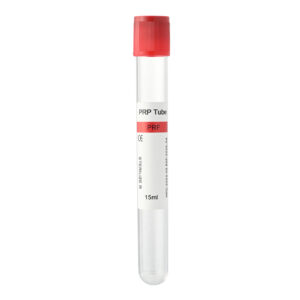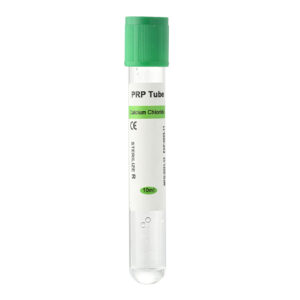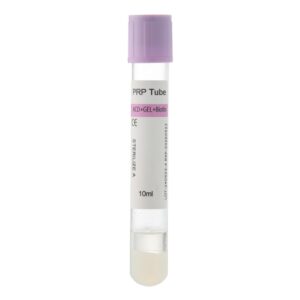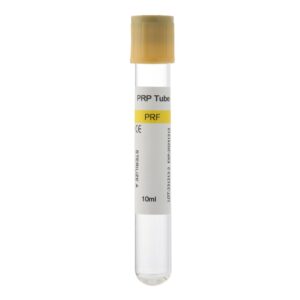PRF vs S-PRF: What’s The Difference? In dentistry, regenerative medicine, and plastic surgery, platelet concentrates have become essential tools for healing and tissue regeneration. Among them, PRF (Platelet-Rich Fibrin) and S-PRF (Sticky-Bone Platelet-Rich Fibrin) are two of the most widely used forms. Both are derived from the patient’s blood without the use of anticoagulants or additives, ensuring a high level of safety. However, there are clear differences in their preparation methods, structural properties, and clinical applications. This article will explain the differences between PRF and S-PRF, outlining their advantages and limitations.
What is PRF?
Choukroun first introduced PRF in 2001 as a second-generation platelet concentrate. Clinicians obtain it by centrifuging venous blood without anticoagulants, which creates a fibrin matrix rich in platelets, leukocytes, and various growth factors. This three-dimensional fibrin scaffold not only supports wound healing but also serves as a natural biological material for tissue regeneration.
Common applications of PRF include:
- Preservation and healing of extraction sockets;
- Enhanced periodontal tissue repair;
- Support in bone grafting and implant surgery;
- Wound healing and skin regeneration therapies.
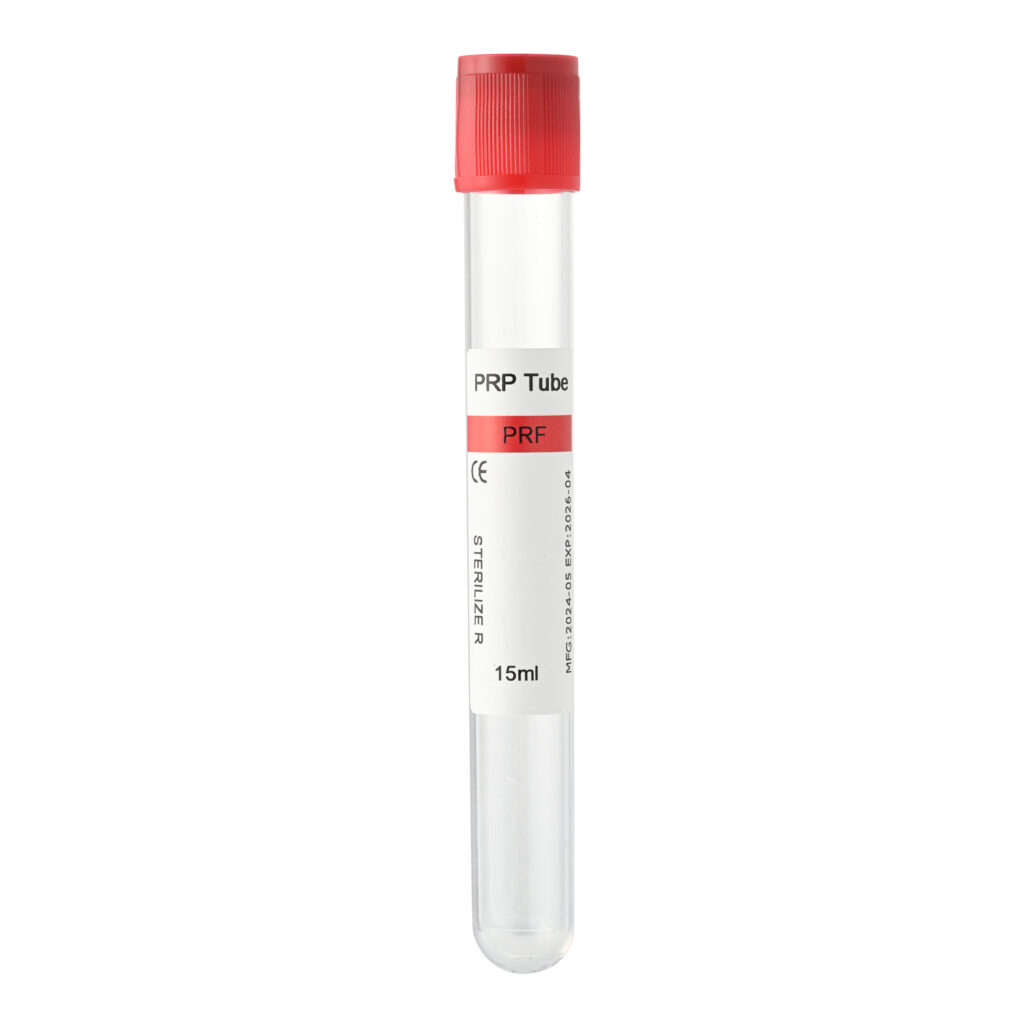
What is S-PRF?
Clinicians often refer to S-Platelet-Rich Fibrin as “Sticky Bone Platelet-Rich Fibrin.” They developed it as a modified form of PRF to meet more advanced regenerative needs, and they prepare it with dry vacuum tubes using low-speed, short-time centrifugation. Compared with traditional Platelet-Rich Fibrin, S-Platelet-Rich Fibrin has a denser fibrin structure, higher viscosity, and stronger plasticity. These properties allow it to combine effectively with bone graft materials, forming a cohesive structure known as “Sticky Bone”.
Common applications of S-PRF include:
- Bone grafting as a filler and stabilizing material;
- Increasing primary stability of dental implants;
- Repair of bone defects and extensive regenerative procedures;
- Aesthetic medicine and dermatology (skin rejuvenation, hair restoration).
Key Differences Between PRF and S-PRF
- Preparation Method: PRF is prepared with conventional centrifugation, while S-PRF requires low-speed, short-time centrifugation in a dry tube.
- Material Characteristic: PRF forms a gel or membrane, ideal for wound coverage; S-PRF has strong stickiness and can integrate with bone grafts to create a stable scaffold.
- Growth Factor Release: PRF releases growth factors for about 7–10 days, while S-PRF provides a longer and more sustained release, supporting extended tissue healing.
- Clinical Applications: PRF is widely used in soft tissue healing and socket preservation, whereas S-PRF excels in bone grafting, implant stability, and large-scale regenerative treatments.
Advantages and Disadvantages of PRF
Advantages
- Simple and fast preparation, no chemical additives.
- Autologous origin ensures high safety and minimal immune risk.
- Effective in soft tissue healing and socket preservation;
- Cost-effective, suitable for routine clinical use.
Disadvantages
- Limited stickiness, less effective for combining with bone graft materials;
- Shorter duration of growth factor release compared to S-Platelet-Rich Fibrin;
- Weaker support for large bone defects or advanced grafting cases.
Advantages and Disadvantages of S-PRF
Advantages
- Denser fibrin network with strong viscosity, capable of forming “Sticky Bone”;
- Provides longer-lasting growth factor release.
- Offers better stability in bone grafting and implant procedures.
- Clinical studies indicate superior bone regeneration potential compared to PRF.
Disadvantages
- Requires stricter preparation conditions and centrifugation parameters;
- More technique-sensitive, operator errors may reduce effectiveness;
- Slightly higher cost than conventional PRF;
- Clinical application still requires additional training for some practitioners.
Scientific and Clinical Evidence
Recent clinical studies show that S-Platelet-Rich Fibrin achieves better outcomes in bone regeneration. For example, in cases of periapical lesions and bone defects, S-Platelet-Rich Fibrin achieved a radiographic healing rate of 94.1% after 18 months, significantly higher than A-Platelet-Rich Fibrin and simple blood clot groups. While overall clinical success rates were similar, S-Platelet-Rich Fibrin demonstrated stronger regenerative potential.
For video guides and demonstrations, check out Siny Medical’s YouTube channel.
FAQs
Q1: Which is safer, PRF or S-PRF?
Both are equally safe since they are derived from the patient’s blood and do not contain anticoagulants or chemical additives. The key factor lies in proper preparation to ensure consistent quality.
Q2: Can S-PRF completely replace PRF?
No. PRF is still widely used for soft tissue healing and socket preservation due to its simplicity and lower cost. S-Platelet-Rich Fibrin, on the other hand, is more suitable for complex bone grafting and implant cases where long-term support is needed. They complement each other rather than replace one another.
Q3: Which is better for aesthetic treatments?
Both PRF and S-Platelet-Rich Fibrin can be applied in facial rejuvenation and hair restoration. Platelet-rich fibrin is easier to use for small-scale applications, while S-PRF, with its prolonged release of growth factors, is often preferred for treatments that require long-term regenerative effects.
Q4: Is the preparation of S-PRF more complicated?
Yes. S-PRF requires specific centrifugation conditions and must be prepared quickly in dry tubes. Any deviation may affect the final fibrin structure. This is why additional training is often recommended for clinicians using S-Platelet-Rich Fibrin.
Q5: How should patients decide between PRF and S-PRF?
Patients usually don’t need to make this choice themselves. The decision depends on the treatment goal. For soft tissue repair and socket preservation, PRF is generally sufficient. For bone grafting, implant stability, or larger regenerative needs, S-Platelet-Rich Fibrin is often the better choice.
Summary
Both Platelet-Rich Fibrin and S-Platelet-Rich Fibrin have revolutionized regenerative medicine and dental surgery by leveraging the natural healing capacity of the patient’s blood. They provide safe, biocompatible solutions that promote tissue regeneration without the risk of immune rejection.
PRF is valued for its simplicity, affordability, and effectiveness in soft tissue healing, making it ideal for routine clinical use. S-PRF, with its denser structure, stickiness, and prolonged release of growth factors, offers distinct advantages in bone grafting, implantology, and complex regenerative cases.
For clinicians, understanding the differences between PRF and S-PRF helps guide more precise treatment strategies. For patients, this knowledge builds confidence and trust in the chosen therapy. As research advances, Platelet-Rich Fibrin and S-Platelet-Rich Fibrin will continue to play a central role in regenerative treatments, with future innovations likely to expand their clinical potential even further.


